Dan Buettner has studied five places around the world where residents are famed for their longevity: Okinawa in Japan, Nicoya in Costa Rica, Icaria in Greece, and Loma Linda in California and Sardinia in Italy.
People living in these so-called “blue zones” have certain factors in common – social support networks, daily exercise habits and a plant-based diet, for starters. But they share another unexpected commonality. In each community, people are gardening well into old age – their 80s, 90s and beyond.
Could nurturing your green thumb help you live to 100?It is well-known that an outdoor lifestyle with moderate physical activity is linked to longer life, and gardening is an easy way to accomplish both. “If you garden, you’re getting some low-intensity physical activity most days, and you tend to work routinely,” says Buettner.
He says there is evidence that gardeners live longer and are less stressed. A variety of studies confirm this, pointing to both the physical and mental health benefits of gardening.
Archive for the gardening tag
Janet’s Journal: Gardening and Growing Older Gracefully
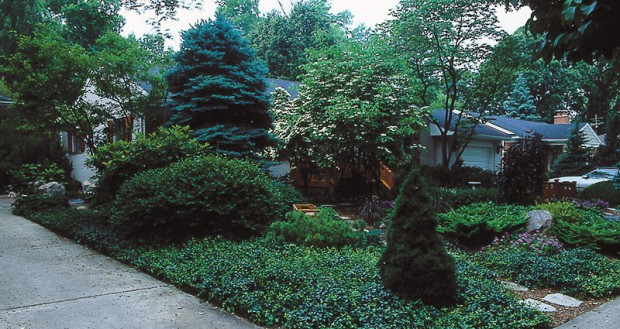

When I was just five years old, Mrs. Kissinger’s age was as definite to me as my own. She was old. Grandparent old. Hair in a bun, crinkly-eye old. I can still hear the quaver in that voice that coached me to recognize weeds, and see the wrinkles on the fingers that pinched an apron into a sling for picking peas. The gold seal on the certificate of age I fashioned for her was that she could call my Dad “Johnny” and “son.”
She always seemed to be smiling when she was in the garden. Recently that memory has become a stand-out, a marked contrast to some of what I’ve been seeing in myself and my friends as we acquire age.
I see fretting (“This is just too much work anymore”) and hear worry (“That bed’s gotten totally out of control”). I’ve commiserated with others over keeping up with the over-ambitious creations of our own youth. Worst, in contemplative moments I’ve recognized in my own negative thoughts the same whines and crying I’ve heard from and disdained in others.
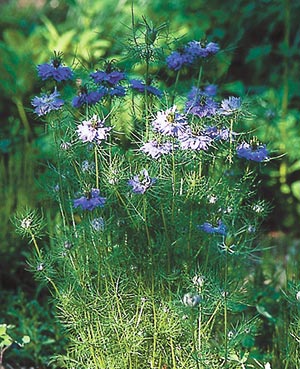
This is not a new phenomenon, this reconciliation of garden and gardener over time. Gardeners have made this life passage before. Some, like Mrs. Kissinger, smiled as they went and their gardens reflected that contentment and calm. She found a way to accept the realities, anticipate the challenges, make the changes, and grow old gracefully.
It’s been my good fortune as a professional gardener to work with many people and to see many approaches to this phase of gardening. I’ve bailed out gardeners who made commitments beyond their physical means or who fell temporarily behind because of an illness or injury. I’ve worked regularly with individuals who need help on certain tasks but not others. I’ve even drawn and executed designs aimed specifically at reducing work for older or less able hands. Most important to me, I’ve had the privilege of working once again for the smiling older gardener and the wise gardener approaching age. I can understand the need and their advice. Here is what they say.

Judith Mueller: Making Choices, Keeping Fit
Judith Mueller doesn’t have a grand plan to garden forever, even though she thinks she will. She takes one season at a time.
Even before she became an empty nester and grandparent, certain of her friends would come over, look at her extensive gardens and say, “You’re crazy! How do you keep this up?”
Her response has always been, “It’s what I choose to do with my time.”
“I know that a garden doesn’t all have to be done today. It’s an ongoing process and it’s not over until I say it’s over.
“So I looked at what shape the gardens were in and decided what I could do myself, what I needed to get help for, and what I can let go of and let someone else do. This year that meant I looked around and got help edging and mulching. Someday I might have to cut back, maybe on the size of my beds. Or maybe I’ll have to ask for more help. But I don’t think about that now because for this year I can handle it.
Just one of the reasons Mueller feels gardening is important is that, “It keeps us mentally alert and healthier.” Her career in a medical profession makes her especially aware of how much good her hobby does her. “I don’t get aches and pains like I know some people do. And people ask me things like ‘How did you lift that?’ So I know I must be strong and healthy for my age.”
Mueller advises that gardeners who want to keep going, keep fit all year. “Don’t rely on gardening alone to keep you in shape through the off season. I’d rather not have to work out, but gardening, especially spring work, can be really overwhelming as you get older, if you’re not in some kind of shape.”
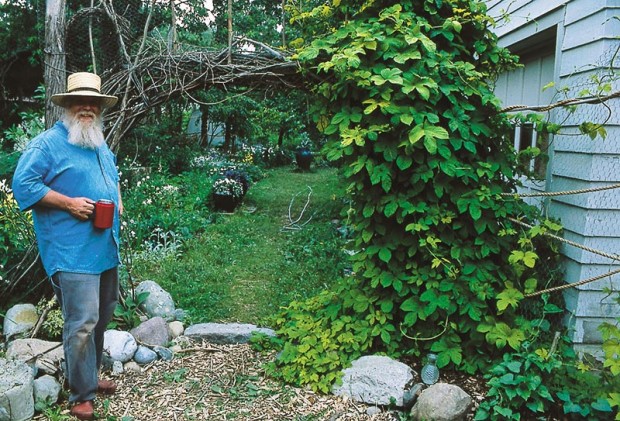
Wil Strickland: Forced to Look
Wil Strickland, whose garden and face are well known in Ann Arbor, laughed when I asked for his input. “It’s ironic you should ask me about how I cope with gardening now that I’ve had a heart attack. Because right now I have never felt better and may be healthier than I’ve ever been in my life. But you’re right, I have had to look at things differently, and I have made some changes.”
He makes four recommendations.
One: Choose your weeds. Pick willing spreaders that you can easily identify and don’t mind having in your garden, and let those go ahead and take over. Something like forget-me-nots will merrily fill in bare spaces, choking out what would be less welcome weeds.
Two: Mulch. You can’t ever do enough of it. As you approach the golden years, beef up your garden, too, so there is less space between plants, less room for weeds to get started.
Three: Start eliminating high-maintenance plants any time. Those plants that need the most work—dividing or pruning or fending off pests—are the ones you should let go. Switch to lower-care plants, such as shrubs and groundcover combinations. You don’t want to be in that situation Strickland cites, “with a garden full of plants you love but can’t possibly maintain anymore. There are so many plants you can try that you might surprise yourself and find out roses or irises aren’t the only things that can make you happy.”
Four: Garden in big pots. “It’s the ultimate answer,” says Strickland. “You can do floral arrangements, or grow vegetables or anything you want. Perhaps you’ll need to have someone help you set them out, but they can be set anywhere without worrying about whether the mower can get around them, they don’t need edging and they’re a wonderful height!”
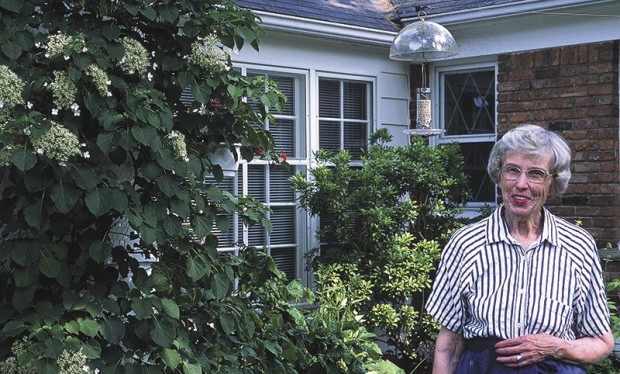
Virginia Smith: Happy to Work
Mueller and Strickland are both starting down a path that Virginia Smith found years ago. “Attitude is the most important thing you need to keep gardening gracefully, which is what I like to think I’m doing. It’s one of those things you have to accept. I think of so many things I did so easily a few years ago that I wouldn’t even attempt now. But rather than railing about what I can’t do, I say look at all I can do.”
Smith gets help a couple of times a year, with big seasonal jobs like mulching and pruning. But most things she keeps doing herself, making little changes all the time in how she does the work. “I can’t get on my knees anymore, so I bend over to plant. After a period of time my back gets tired so then I go do some pruning, which uses a different set of muscles and a different mindset.”
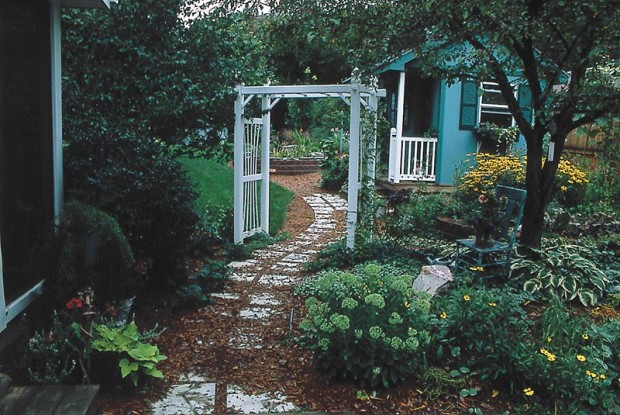
Changes in the garden itself have also allowed Smith to keep gardening. “I use a lot more annuals than I used to, and I’ve designated some spots that are just for annuals, spots that are not too big but just the right size. They’re always ready for me to plant. As soon as the weather lets me plant annuals, I can fill those spots. It’s very gratifying, right away. I also do more annuals in containers, pots I can fill with lighter weight styrofoam and potting soil so they’re light enough for me to move around to just where I need them.”
An altered perspective on what must be done on any one day is helpful, says Smith. “I don’t set deadlines anymore—I just do what I feel like doing. Then I rest a while and if I feel like doing more, I do.”
On the other hand, with its passage, time has become more valuable. “I’m less reluctant to move something if I don’t like it where it is. I’ve either gotten more brave or more foolish!”
Having to decide what one can and can’t accomplish and determine what you most want to do with your time has also changed Smith’s outlook on some plants, even weeds. “I’m more patient with plants I used to pull out because they were too aggressive, things like sweet woodruff that take over. I used to pull them to keep them under control. Now I just keep them from choking plants I really like, and enjoy them wherever they’re pretty enough to just put up with.
“I enjoy gardening more every year,” says Smith, and she smiles.
Article by Janet Macunovich and photos by Steven Nikkila, www.gardenatoz.com.
Sharing the edge: Gardening along property lines
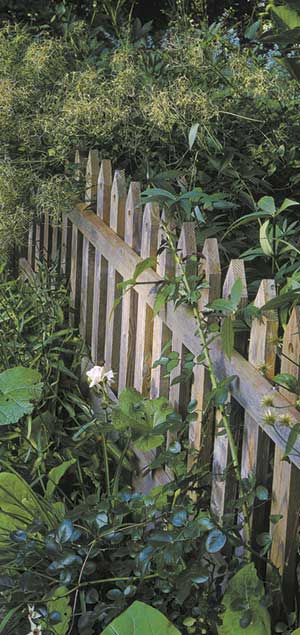
Article by Janet Macunovich
and photos by Steven Nikkila
Sometimes while gardening, sinking my fingers and soul into the earth, I forget where I am. Entranced by a boundless web of life anchored to the plants in my hands, my own boundaries move outward and I float free in the universe.
Until my work takes me up to the edge, that frustrating place where my property butts up to a neighbor’s. How stifling to the artistic gardener, to be hemmed in with such unequivocal straight lines. So tough to bring our green, growing stuff to a graceful end at that all too rigid but oh-so-necessary political boundary.
Perhaps the toughest kind of line is the edge of a small property, a city lot. Already too confining for some gardeners, that space seems to shrink further when filled with people and pets, outlined with fences and weighted with public sidewalks.
In front, the property line slices through and lays claim to what appears to be a sliver of the neighbor’s lawn. A non-gardener may cede that land to the lawn-owner, but the green thumb, already chafing about lost ground in other areas, sees it as a strip garden marooned on the far side of the driveway. Adversity being the mother of invention, the garden grows from there.
A conventional solution
Maintaining dominion over that strip is simplicity itself—draw a straight line and plant. Hedges are conventional, safe plantings for such a spot. Or are they?
Hedge trimming is often the rub. How to keep those shrubs neatly shaped when access to their far side requires crossing the line? If each neighbor prunes his or her own side, timing and technique become issues. Through an open window one neighbor might hear, “I wish the Simons would trim that hedge, it looks so scraggly on their side!” Of course the Simons will have their rebuttal, muttered or perhaps stage-whispered over the rattle of pruning tools: “Hmph! We didn’t plant it, we didn’t get a say in what kind of hedge it would be, but we have to prune it!”
Even with synchronized pruning, uniformity of maintenance may become an issue. “Look at the weeds coming through the hedge from their side!” “Wouldn’t it be nice if they would mulch their side too, and use the same mulch we do?” “Couldn’t we continue the Christmas lights over on that side?”
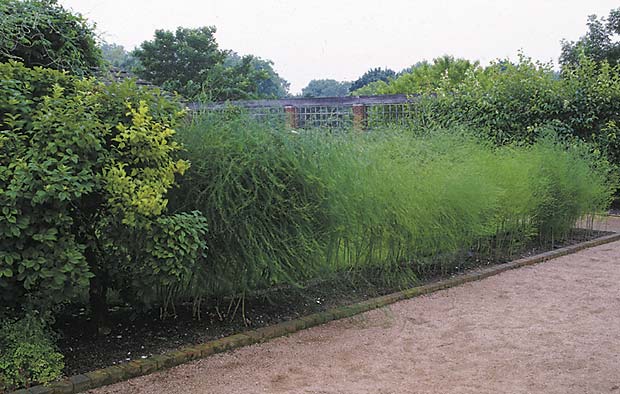

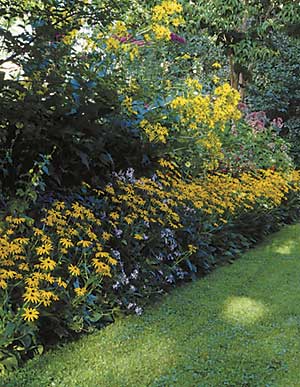
The perfect hedge
Sometimes neighbors agree in advance to plant or replace a hedge, decide together on the species of shrub to be used, even splitting the cost. Such jointly-owned hedges often straddle the lot line. “True enlightenment,” one might think.
Only if people stayed planted as long as shrubs do. Our roots have atrophied, though. Homes change hands far more frequently than they did when hedges were king. Hedge care falters in the transition. Ownership of boundary plants becomes fuzzier with each new tenant. Hedge co-owners sometimes find themselves suddenly hedgeless, victims of the neighbor’s landscape renovation scheme—a neighbor who did not know he or she was only part owner of the plants.
In recognition of all that can go wrong, we ought to plant narrow strip edges with a shorter turnover in mind. Daylilies, peonies, black-eyed Susans, and sedum ‘Autumn Joy’ make excellent short hedges. Individual plants in the hedge are much more portable than shrubs, can be cut to the ground without harm when home maintenance work demands a clear path, can recover in a year if damaged by a new driver’s wayward steering, and can provide far more color than shrubs which lose some flowering wood at each trimming.
For more height in a herbaceous hedge, consider using ornamental grasses, vines on a trellis, even asparagus. Although these selections may fall a few months short of a full year presence, they make up for that failing in speed of establishment. In just two years, a row of zebra grass (Miscanthus sinensis ‘Zebrinus’) can make a solid six-foot wall. The wall disappears from April 1 until June 1 as the plants are cut to the ground and bounce back, but it’s there in full density during the height of the summer barbecue season and the windiest winter storm.
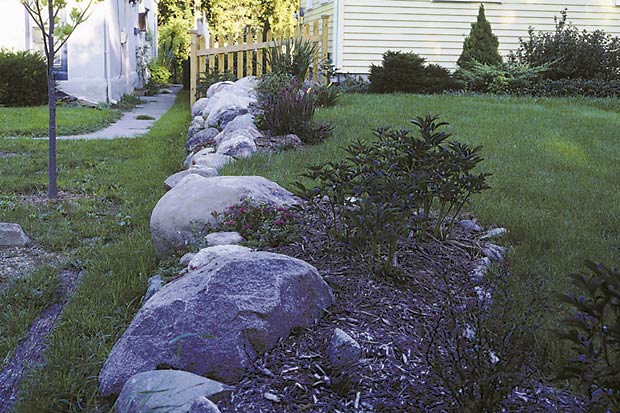
Creative curves
What about the gardener’s need for artistic expression? He who loves curves can become frustrated with long, narrow spaces that seem to demand long, straight lines of plants.
However, a straight line of plants need not have straight sides or tops. It can be tall at one end, short in the middle, medium height at the far end. It can consist of several types of plants of naturally varying widths and heights or a single type pruned to create a curvaceous top or side.
Try it—draw a narrow rectangle. Now draw a wavy line within the rectangle, along its long axis. To plant the line, stagger plants to trace the crests and troughs of those waves. As you maintain the bed, remember to preserve open space between the straight edge of the bed and the plants. This may mean strict use of pruning shears or careful selection and thinning of plants.
Window walls
Deviating from a straight line can have advantages in neighborliness. No one likes to feel that he or she has been walled out of an area. One way to break up a forbidding wall is to interrupt it with an inviting window or door.
Think it through before making the breach and it will be inviting without being a blanket invitation to peep or enter without knocking. Place the opening carefully and you can offer a pretty vignette yet preserve privacy. Set the door in a logical place and neighbors—even children—will use it. If you don’t want it used too freely, sink a pair of posts and hang a gate.
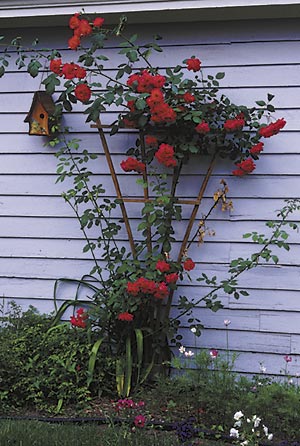
Invisible lines
Sometimes although we want to garden along the edge we don’t want a line at all but some less divisive visual flow from one property to the next. That’s the place to step back and take a wider view. Design the edge to continue an existing bed on the neighbor’s lot, or one on your lawn across the driveway. Even if the outlines of your edge bed and the other don’t join directly, you’ll achieve a unified effect if it appears the two beds’ edges would flow into one other if extended.
Another way of connecting isolated beds is by planting them to repeat species, color, texture, shape or alignment of plants in other areas. The link can be strengthened if the same or related non-plant items appear prominently in the beds. If an abstract rusted metal sculpture with a southwestern desert feel anchors one bed, repeat that theme in the next.
Give and take
Sometimes house placement and fencing isolate an area from foundation to lot line along one side of the house. The area may be accessible to its owner only by a long walk around and across the front yard, and then can be viewed straight on only from the neighbor’s driveway or patio. Some people leave such an area in lawn for ease in care and neatness of appearance. Some garden the space for the fun of gardening and the pleasure it gives the neighbor. Others cede care of the area to the neighbor if that person has both the best view of the bed and a desire for more gardening space.
If you’ve granted gardening rights to the neighbor on such a space, ask for compensating land elsewhere along your shared line. Who knows, maybe that neighbor is fed up with gardening the strip along the driveway and will let you take it over to expand your lawn!
Janet Macunovich is a professional gardener and author of the books “Designing Your Gardens and Landscape” and “Caring for Perennials.” Read more from Janet on her website www.gardenatoz.com.
The Michigan Gardener bookstore is OPEN for business
 Our bookstore is now open. You can now browse all the titles we feature in the “Books for the Michigan Gardener” feature. Best of all, the bookstore is powered by Amazon so there is no need to setup any new accounts or input payment information. There is no better time than now to purchase some reading or reference material for the gardener on your gift list. Happy shopping!
Our bookstore is now open. You can now browse all the titles we feature in the “Books for the Michigan Gardener” feature. Best of all, the bookstore is powered by Amazon so there is no need to setup any new accounts or input payment information. There is no better time than now to purchase some reading or reference material for the gardener on your gift list. Happy shopping!
